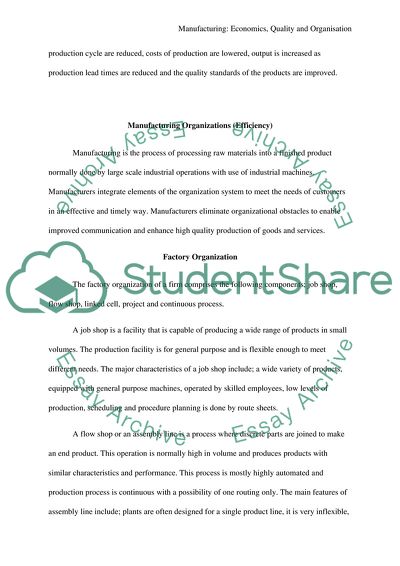Cite this document
(Manufacturing: Economics, Quality and Organisation Coursework Example | Topics and Well Written Essays - 2500 words - 1, n.d.)
Manufacturing: Economics, Quality and Organisation Coursework Example | Topics and Well Written Essays - 2500 words - 1. https://studentshare.org/engineering-and-construction/1825227-manufacturing-economics-quality-and-organisation
Manufacturing: Economics, Quality and Organisation Coursework Example | Topics and Well Written Essays - 2500 words - 1. https://studentshare.org/engineering-and-construction/1825227-manufacturing-economics-quality-and-organisation
(Manufacturing: Economics, Quality and Organisation Coursework Example | Topics and Well Written Essays - 2500 Words - 1)
Manufacturing: Economics, Quality and Organisation Coursework Example | Topics and Well Written Essays - 2500 Words - 1. https://studentshare.org/engineering-and-construction/1825227-manufacturing-economics-quality-and-organisation.
Manufacturing: Economics, Quality and Organisation Coursework Example | Topics and Well Written Essays - 2500 Words - 1. https://studentshare.org/engineering-and-construction/1825227-manufacturing-economics-quality-and-organisation.
“Manufacturing: Economics, Quality and Organisation Coursework Example | Topics and Well Written Essays - 2500 Words - 1”. https://studentshare.org/engineering-and-construction/1825227-manufacturing-economics-quality-and-organisation.


